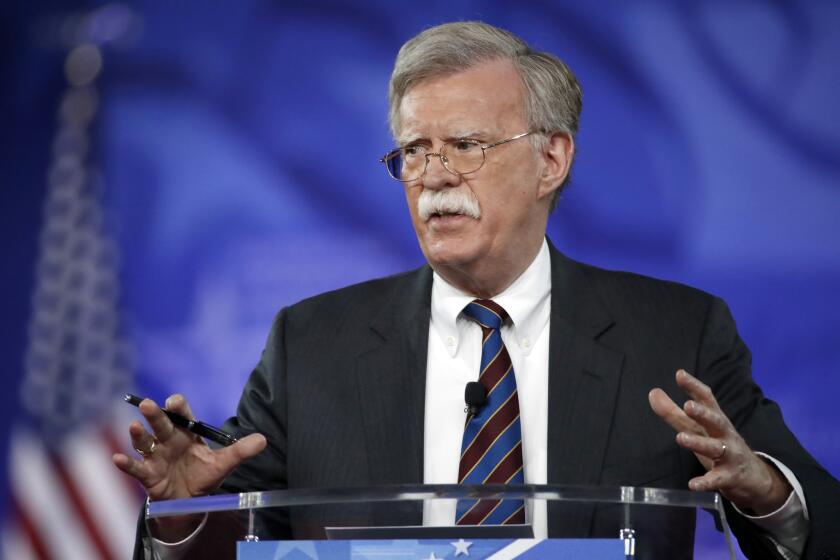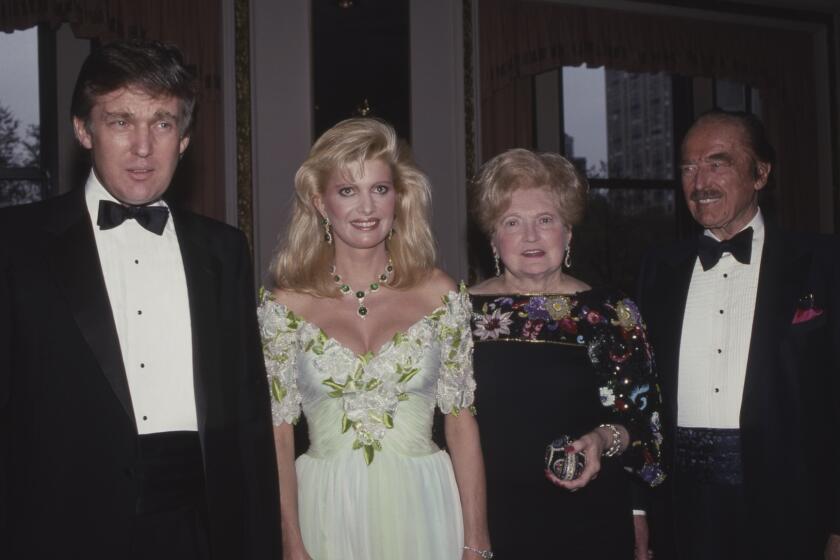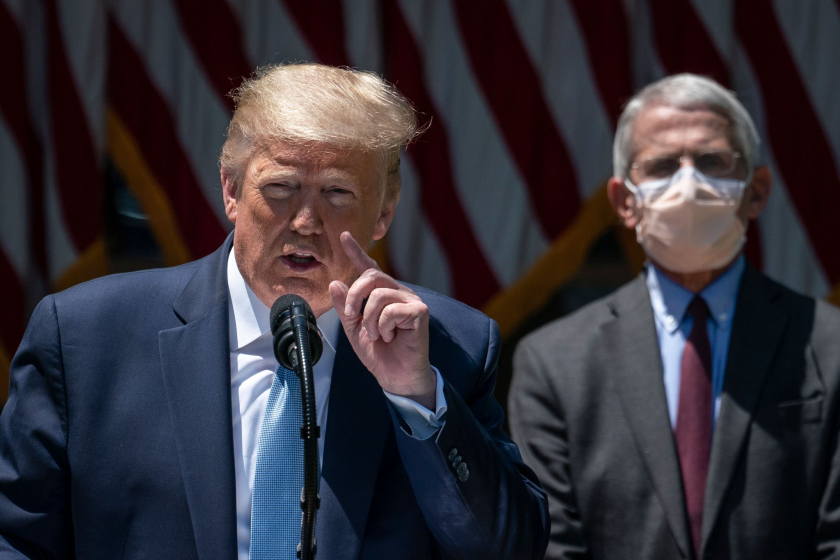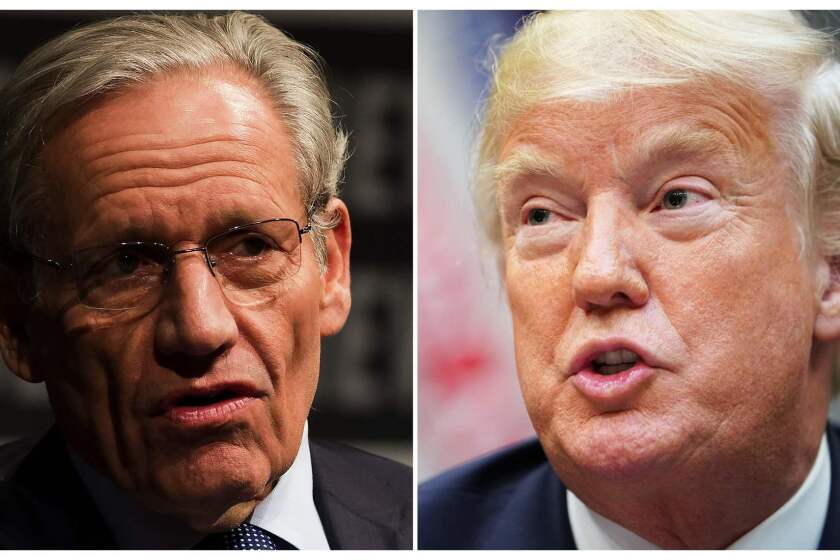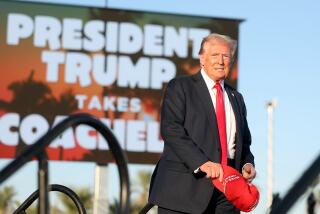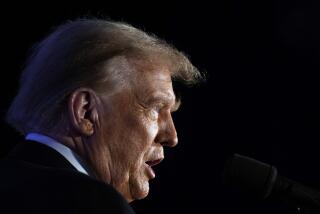Review: Woodward’s Trump exposé ‘Rage’ reflects the lazy thinking that got us into this mess
- Share via
On the Shelf
Rage
By Bob Woodward
Simon & Schuster: 480 pages, $30
If you buy books linked on our site, The Times may earn a commission from Bookshop.org, whose fees support independent bookstores.
They spoke 18 times. Eighteen! Do you think Trump has spoken to his Energy secretary 18 times? Do you even know who his Energy secretary is? I can tell you this much; he is not Bob Woodward, the man on the other end of the line for all those conversations, some of them on tape, many conducted in the midst of a pandemic.
These interviews form the spine of “Rage,” Woodward’s second book about the Trump administration. His first was called “Fear.” If you happen to have forgotten about “Fear,” Woodward offers a reminder on Page 8 of “Rage,” quoting from the earlier volume’s description of Trump as “mercurial” and “unpredictable.” Both words mean the same thing, but let’s leave that aside for now.
Then Woodward quotes himself again, from a television appearance made while promoting “Fear”: “Let’s hope to God we don’t have a crisis.”
We’ve now got enough crises to keep Beltway authors busy for a generation, though most of them will not be lucky enough to speak to the president 18 times, because they are not Bob Woodward, who — with his Washington Post colleague Carl Bernstein — helped pave the way for Richard Nixon’s downfall. He has shared in two Pulitzers and written 21 books, virtually all of them about how power courses through Washington’s veins. Woodward is the town cardiologist, or at least carries himself as such.
So what profound insight did those conversations yield? With a title like “Rage,” you imagine King Lear-like diatribes against the Dems, or some Trumpian version of Nixon talking to the portraits, third martini spilling on the West Wing carpet. And you imagine the stenographer of that rage rendering it with a clarifying fury of his own.
“Trump is the wrong man for the job,” Woodward writes. This is not the first sentence of the book, the base camp from which higher-order truths are scaled. No, this is the summit, the last line on the last page, the empyrean heights to which those dozen-and-a-half interviews have led.
I should proceed gently here, as someone who has deposed zero presidents and won zero Pulitzers. My book on the Trump administration, for which I spoke to the president only once, has 43 ratings on Amazon. “Fear” has well over 5,000.
Former national security advisor John Bolton skewers President Trump and White House insiders in ‘The Room Where it Happened.’
Usually, a review like this is assigned to the kind of Acela jockey who runs into Woodward frequently enough to refrain from making things awkward. Someone like Jill Abramson, the former New York Times executive editor who praised the fearsomely unreadable “Fear” in the Washington Post for its “flat, reportorial tone.”
She probably meant to say that Woodward’s writing has the mouthfeel of gravel. In “Rage,” he serves up heaps of that inimitable Woodward prose. Here, for example, is Trump flying to meet North Korean dictator Kim Jong Un at Panmunjom: “It was pea soup outside. The president had already had two Diet Cokes.” What a detail: two Diet Cokes, not just one. Two because Trump is anxious? Because he has been up all night watching Fox News? Woodward does not say.
He doesn’t do depth. People shuffle in and out of the Oval Office and other rooms of great importance bearing little more than fourth-rate Homeric epithets: Air Force Chief of Staff David Goldfein is a “proven strategic thinker,” while Dr. Anthony Fauci is “the voice of reassurance.”
A lack of anything remotely resembling literary ability has long been excused on the grounds that Woodward is a first-rate reporter, and first-rate reporters cannot afford the luxury of craftsmanship. The reliance on cliché is a necessity. But nobody wins when we go easy on the Bob Woodwards of this world. Lazy writing is lazy thinking, and lazy thinking is what got us into this whole mess.
The greatest achievement of “Rage” is that its deadening incoherence is a pretty close approximation of what it has felt like to be in Washington in 2020. To be perfectly clear, he has no feel for the city itself, or for anyone who doesn’t have a West Wing pass. Deputy U.S. Atty. Gen. Rod Rosenstein is described as “an anonymous cog in the wheels of government.” Woodward doesn’t seem to get that those cogs hold the wheels in place and are frequently more interesting than the bold-faced big shots doing the driving.
The finest chroniclers of Washington — Marjorie Williams led the pack, by 10 miles — brought this sordid town to life by grasping that all politics is human. Behind the machinations and the intrigue were ordinary people trying and often failing to meet their own conceptions of what it meant to serve the American public. Had she not been felled by cancer at 47, Williams may well have rendered Trump with a depth of observation and compassion beyond the abilities of Woodward, myself or any of our contemporaries.
The President’s “only niece,” clinical psychologist Mary Trump, portrays a man warped by his family in “Too Much and Never Enough.”
The senseless drumbeat of news — that Woodward does gets right, page after page. Russia, impeachment, China, North Korea, the novel coronavirus, new nuclear weapons, racial unrest, the presidential campaign. These pile up like cars on the Beltway, with Woodward as the traffic reporter circling in the helicopter above, frenetically trying to describe the scene.
If anything, the chaos should have pushed Woodward to condense, clarify, forge a cohesive story. Say what you will about Michael Wolff and his creative license-taking; his two books on the administration managed to distill a harmonic narrative from the cacophony of Trumpism. And he didn’t need 18 presidential interviews to do it.
The closest “Rage” comes to a structure is a talk-by-talk, blow-by-blow of those precious moments, beginning on Dec. 5, 2019, with a conversation that lasted — Woodward proudly informs us — 74 minutes.
They talk about impeachment, which is set to culminate in two articles being forwarded from the House to the Senate. Thus comes a blazing Woodward fastball:
“Any angst?”
“No.”
So it goes. Every few pages, Woodward announces that Trump is on the horn: “Trump surprised me at home with a call about 1:30 p.m. on Monday, January 20, Martin Luther King Jr. Day.”At times, the calls take on the air of romantic pursuit. “I called him again that night,” Woodward writes. “He did not call back. I wondered if that might be the last conversation we’d have.”

Need it even be said that the challenge in interviewing Trump is not getting him to talk, but gleaning anything meaningful from the conversation? Credit goes to whoever on Woodward’s “team” figured out how to season a series of nothing-burgers into what looks and smells like filet mignon. When the book was first mailed to journalists earlier this month, social media quickly exploded with reports that Trump admitted to Woodward that he had known about the danger of the coronavirus as early as February but decided not to tell the public.
The few lonely voices pointing out that this was not really news were summarily ignored. A blockbuster story from April, authored by six of the best investigative journalists at the New York Times, made clear that Trump had repeatedly been warned about the coronavirus and chose repeatedly to ignore those warnings.
Cancel me if you have to, but I am confident that his “admission” to Woodward was not evidence of Nixonian deception but, rather, of a mind so calcified with machismo that 200,000 dead Americans cannot break the spell. And yet, this “scoop” was treated as a coup de grâce by an establishment that wants to believe that good old Bob is capable of expelling a president it has always despised.
Woodward is an access journalist. Access is what he has been doing since Watergate, a case he was able to break because Mark Felt — a.k.a. Deep Throat — liked him enough from their White House exchanges to hand him the earth-shattering scoop. Most access journalists are satisfied with one interview. Woodward is better than that. After he gets access, he trades it for more access, turns the access back on his original sources to squeeze out additional access they didn’t know they had. He is persistent. Give him that.
Still, access to power is the coin of the realm. In one recent tweet, Trump called Woodward a “social pretender.” As with many Trump tweets, the mangled body of truth can be glimpsed through the flaming wreckage.
In more than nine hours of White House chats and late-night phone calls, President Trump bared his soul to Bob Woodward — and showed how little is there.
In her classic 1996 takedown of Woodward for the New York Review of Books, Joan Didion explained that people spoke to Woodward because they knew he would print only what they said, without calling their assertions into question. A Woodward source, she wrote, knows “that his or her testimony will be not only respected but burnished into the inside story.” That is why Trump — the outsider desperate for insider respect — spoke to him too.
Such a lack of moral curiosity is especially troubling in our debased times, when the cover of neutrality is daily abused by partisans and charlatans. Only it should not be surprising, for it has marked Woodward’s approach for ages.
In “All the Truth Is Out,” a superb book on Sen. Gary Hart’s doomed 1988 presidential run, Matt Bai (a former colleague of mine) writes of Hart sleeping on Woodward’s couch while on the outs with his wife. After Hart’s costly trip on the pleasure craft Monkey Business led to his political demise, the Washington Post faced difficult questions about Woodward’s weird relationship with Hart. Woodward acknowledged that he was “uncomfortable” with intimations of an affair “and would have told the truth if someone asked.”
If someone asked!
That endemic lack of curiosity could well have been more damaging when, as an editor at the Washington Post, Woodward oversaw the publication of “Jimmy’s World,” the story of an 8-year-old D.C. heroin addict that would win its author, Janet Cooke, a Pulitzer Prize. Jimmy turned out to be a complete fabrication. Woodward said in the Post’s brutal postmortem that he had been “negligent” in failing to scrutinize Cooke’s story.
With our politics reaching a Weimar fever pitch, Woodward’s phlegmatic transcriptions have come to seem, for some, an act of moral abdication. I doubt, however, that his releasing the contents of those 18 conversations would have suddenly torn Trump’s supporters away from him. The man told people to drink bleach — and survived. He will survive Woodward too.
Besides, it is very clear from “Rage” that Woodward was the main character. For all the encomia about what his zealously celebrated career means to American journalism, this book and many others — we will not discuss his tome on Dan Quayle, though someone somewhere should — are a testament to what Woodward thinks of himself.
In one especially dreary passage of “Rage,” Woodward presents Trump with 14 points he believes are critical for the president to address as he combats the coronavirus. Woodward’s insistent recitation of this pointless advice rightly irritates Trump, and both men leave the conversation displeased.
And yet the conversations continue. In the one that follows, Trump asks if he is “wasting a lot of time” by talking to Woodward.
“I can think of other things I’d rather be doing,” Trump says.
Me too, Mr. President. Me too.
Bob Woodward’s “Fear: Trump in the White House” has sold more than 1.1 million copies in its first week of release, making it the fastest-selling book in the history of its publisher, Simon & Schuster.
Nazaryan is the Washington correspondent for Yahoo News; his books include “The Best People: Trump’s Cabinet and the Siege on Washington.”
More to Read
Sign up for our Book Club newsletter
Get the latest news, events and more from the Los Angeles Times Book Club, and help us get L.A. reading and talking.
You may occasionally receive promotional content from the Los Angeles Times.
